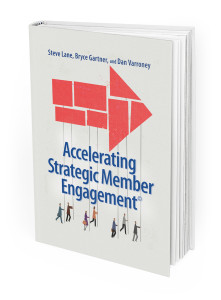This is the ninth in a series on Association culture, its role, how it is shaped, and how it can be changed.
Changing Your Association Management Changes Your Culture
As you likely know, the concept of “management as a system” is not commonly talked about even among experienced Association leaders and academics. However, if you understand that a process is a collection of activities that target a specific output, and that a system is a collection of processes that target a larger aggregated output, then buying the concept of a management system isn’t much of a leap.
Why does this matter?
 When we understand that management itself is in fact a collection of specific processes, it allows us to apply process thinking and tools to the work of management. So, like any other process, the management process can be understood, assessed, measured, and improved.
When we understand that management itself is in fact a collection of specific processes, it allows us to apply process thinking and tools to the work of management. So, like any other process, the management process can be understood, assessed, measured, and improved.
It took a long time for me to understand the connection between an Association’s management system and its culture. In fact, I learn something new about that relationship almost every day as I interact with customers and discover things I had not seen.
What is clear is that as an Association moves from an informal management system to an intentional and effective one, such as the Now Management System®, the leaders start to actually gain control over their results. This happens because process improvement is all about transparency (seeing where things are breaking down), accountability (measuring results and making it clear who has the responsibility to fix problems), problem solving (ensuring that process owners know how to fix processes), and the elimination of fear (which creates the safety to risk taking action on the problems).
NOW Management System
While the Now Management System systematically creates clarity, it shifts culture by establishing clear norms of accountability, new routines for transparency, and standard disciplines for solving problems. Our system achieves its maximum return on investment by shifting culture at the heart of these dimensions.
Changing Your Association Management Changes Your Culture
Culture is all about patterns, roles, routines, language, and expected behaviors. A good management system addresses every one of those dimensions of organizational functioning. As an example, one of our clients recently held their Quarterly Target Review and reported improvement in 46% of their processes measures quarter over quarter. This organization has dramatically shifted its culture to one of transparency, accountability, problem solving, and shared success.
All in all, I have never seen anything change culture as effectively and as positively as changing an Association’s management system.
Next week, the final post on this 10-part series on Association culture.





